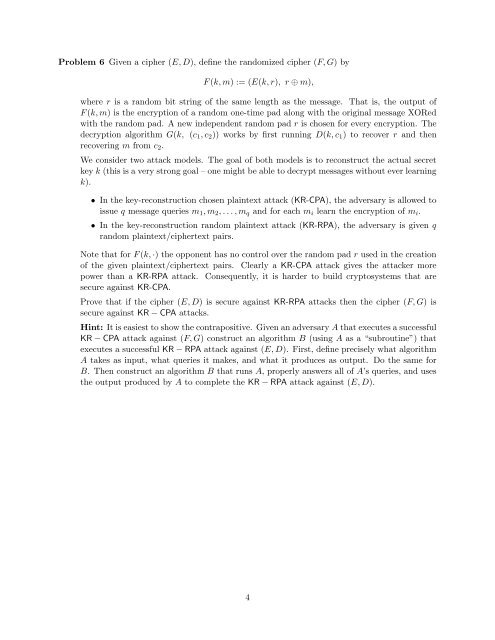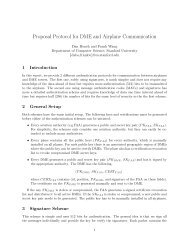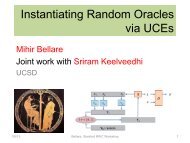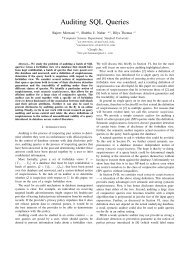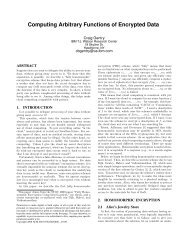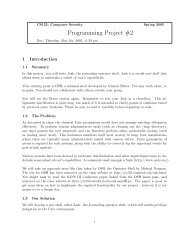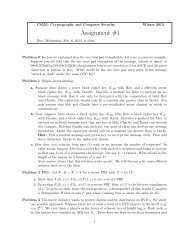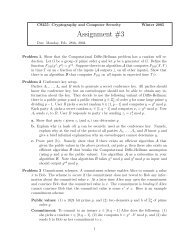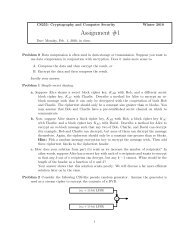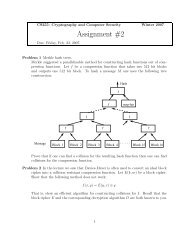Cs255 - Stanford Crypto Group
Cs255 - Stanford Crypto Group
Cs255 - Stanford Crypto Group
You also want an ePaper? Increase the reach of your titles
YUMPU automatically turns print PDFs into web optimized ePapers that Google loves.
Problem 6 Given a cipher (E, D), define the randomized cipher (F, G) by<br />
F (k, m) := (E(k, r), r ⊕ m),<br />
where r is a random bit string of the same length as the message. That is, the output of<br />
F (k, m) is the encryption of a random one-time pad along with the original message XORed<br />
with the random pad. A new independent random pad r is chosen for every encryption. The<br />
decryption algorithm G(k, (c1, c2)) works by first running D(k, c1) to recover r and then<br />
recovering m from c2.<br />
We consider two attack models. The goal of both models is to reconstruct the actual secret<br />
key k (this is a very strong goal – one might be able to decrypt messages without ever learning<br />
k).<br />
• In the key-reconstruction chosen plaintext attack (KR-CPA), the adversary is allowed to<br />
issue q message queries m1, m2, . . . , mq and for each mi learn the encryption of mi.<br />
• In the key-reconstruction random plaintext attack (KR-RPA), the adversary is given q<br />
random plaintext/ciphertext pairs.<br />
Note that for F (k, ·) the opponent has no control over the random pad r used in the creation<br />
of the given plaintext/ciphertext pairs. Clearly a KR-CPA attack gives the attacker more<br />
power than a KR-RPA attack. Consequently, it is harder to build cryptosystems that are<br />
secure against KR-CPA.<br />
Prove that if the cipher (E, D) is secure against KR-RPA attacks then the cipher (F, G) is<br />
secure against KR − CPA attacks.<br />
Hint: It is easiest to show the contrapositive. Given an adversary A that executes a successful<br />
KR − CPA attack against (F, G) construct an algorithm B (using A as a “subroutine”) that<br />
executes a successful KR − RPA attack against (E, D). First, define precisely what algorithm<br />
A takes as input, what queries it makes, and what it produces as output. Do the same for<br />
B. Then construct an algorithm B that runs A, properly answers all of A’s queries, and uses<br />
the output produced by A to complete the KR − RPA attack against (E, D).<br />
4


